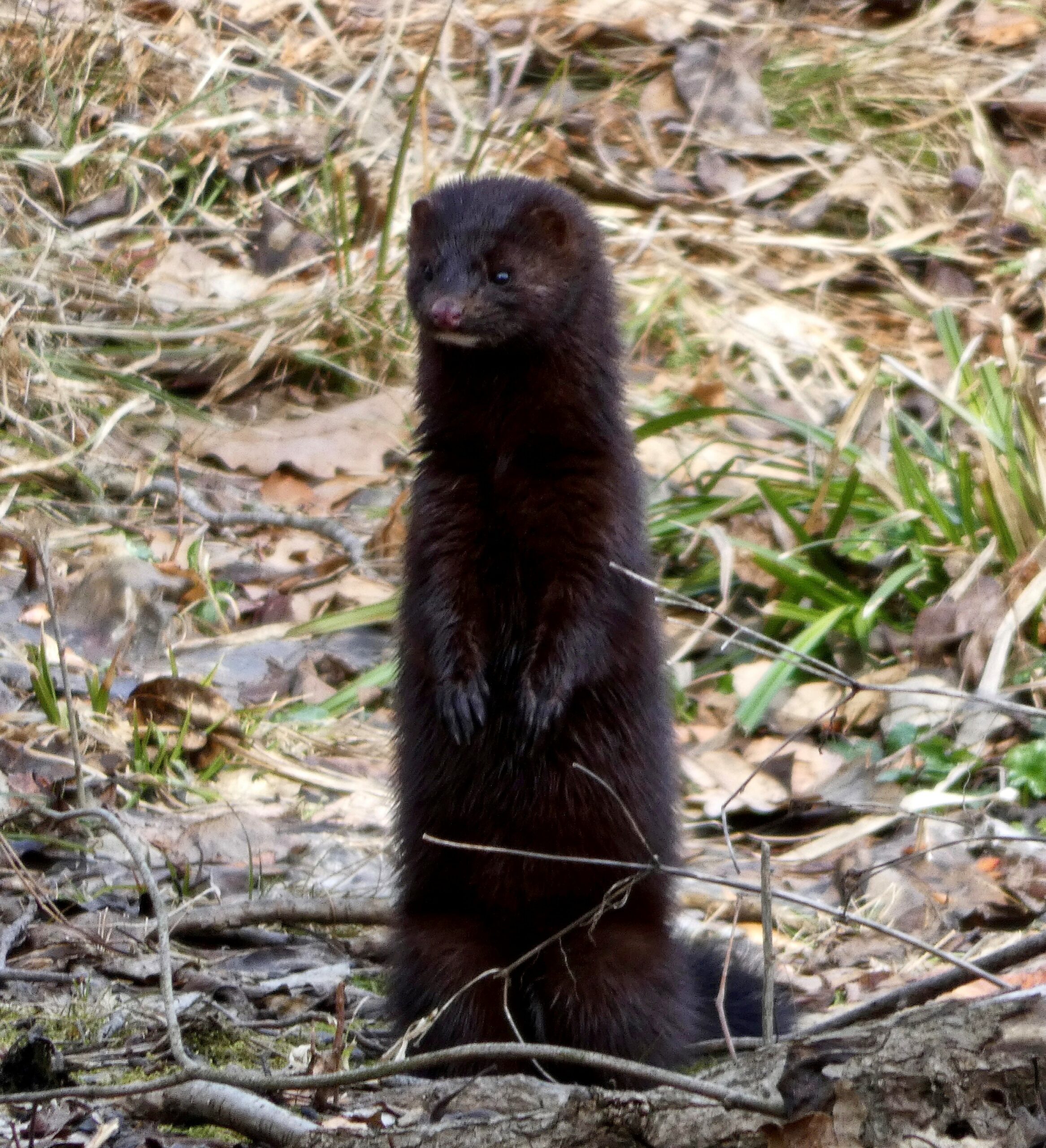The forest dwellers have followed green pathways into the city
While reviewing footage from a wildlife camera at the Arnold Arboretum in Boston last January, horticulturist Brendan Keegan saw an image of an animal that he had never seen there before—a fisher. Fishers are members of the Mustelidae or weasel family, and can grow up to three feet long. These forest-dwelling predators are not something you typically associate with urban areas.
“Visitors have reported seeing them in the landscape over the years,” said Keegan, “and they’ve been documented in
Allandale Woods across the street for a while now.”
But when the elusive predator showed up on film, it was the first time one had been officially documented at the 281-acre Arboretum.
The camera trap that recorded the fisher is part of a project for the Urban Wildlife Information Network, a collaboration of scientists conducting research, Keegan said.
Thilina Surasinghe, associate biology professor at Bridgewater State University, is the principal investigator for UWIN in Massachusetts. Surasinghe said the trail camera is part of a global research network that includes Harvard’s Arnold Arboretum, Mass Audubon, the City of Boston, Cambridge, Brockton, and Lesley University.
This spring, Arboretum personnel got another surprise: a long-tailed weasel, also known as a stoat, was seen near the main building. These 11- to 22-inch-long predators are not typically encountered in urban areas. The smaller short-tailed weasel also lives in Massachusetts.
Lacey Berg, a seasonal horticulturist, set up a camera in April to see if she could get video footage of the stoat.
“Even though I put the camera in the shrubs the stoat usually disappears into, they managed to elude me for months,” said Berg. “So there was definitely a feeling of triumph when we finally caught it on camera.”
Another member of the weasel family—mink, which have dark brown fur and can grow to about 2 feet long—have been seen at the Arboretum for several years, typically near wetlands, said Keegan.

“I’ve seen mink in the past, but this is the first year anyone has documented stoats and fisher in the landscape,” said Keegan. “I’ve read that fishers are generally expanding into urban areas, especially forested parks.”
Indeed they are, said Dave Wattles, black bear and furbearer biologist at MassWildlife.
“Most forest wildlife species have recovered from historic lows due to over-exploitation and forest clearing by European colonists, as forests have grown back,” said Wattles. “They’ve expanded their range and recolonized areas at different rates. There’s been an increase in sightings of fishers.”
Fishers were once thought to need mature forest, but that’s not true, Wattles said.
“They’ve been moving into Eastern Massachusetts suburbs,” said Wattles. “Bird feeders attract birds, as well as small mammals, that provide a food base for them. And blocks of forest throughout the 495 and 128 area make great habitat for species like fisher.”
How do animals like fishers, minks, and stoats end up in urban areas like Boston?
“Often by following railroad tracks and trails, or waterways, like rivers, they end up in the city without realizing it,” said Wattles. “There are green pathways that lead into and throughout the city. Tracing from the Arboretum out, you can get out to Route 128 through green pathways all the way. And [these animals] can go under roads through culverts.”
Areas like the Arboretum and greenways are going to support animals like fishers, stoats, and minks, which can then go out into neighborhoods and take advantage of food. Minks are semiaquatic, so they’re tied to waterways where they can hunt frogs, crayfish, fish, and shore-nesting birds, said Wattles.
“The green areas are the anchor habitat,” he said. “For their prey base, there’s a wealth of small animals for them to take advantage of in urban areas—chipmunks, mice, voles, rabbits, squirrels, birds, rats, etc.—supplemented by human food.”
Fishers and minks have been known to live about 10 years in the wild, said Wattles. But most weasels, including stoats, die in their first year of life.
“Weasels have high metabolism, and are tied to rodent populations,” Wattles said. “They can eat themselves out of house and home, then go through a population crash. If they survive their first year, they can live for several years.”
Berg said stoats need to eat half their body weight every day. “Stoats kill more prey than they can eat, and store food,” said Berg. “They are also opportunistic feeders, and even eat fruits and nuts.”
While not a threat to people, fishers could potentially attack cats and small dogs. Wattles recommended keeping cats indoors and small dogs on leashes. Fishers, minks, and weasels sometimes go after backyard chickens, and will kill all of them if they get into a pen, said Wattles.
They face a variety of hazards in suburban and urban areas, including vehicle collisions and eating mice and rats that have been poisoned with rodenticides, said Wattles.
“The Arboretum is an important urban habitat for a variety of wildlife,” said Keegan. “I would not have guessed that our landscape could host stoats, mink, and fisher. The presence of these mammals shows how we can enhance urban landscapes to create functioning, cosmopolitan ecosystems that support [bio]diversity.”
This article was reprinted from the Boston Globe with permission of the author.
